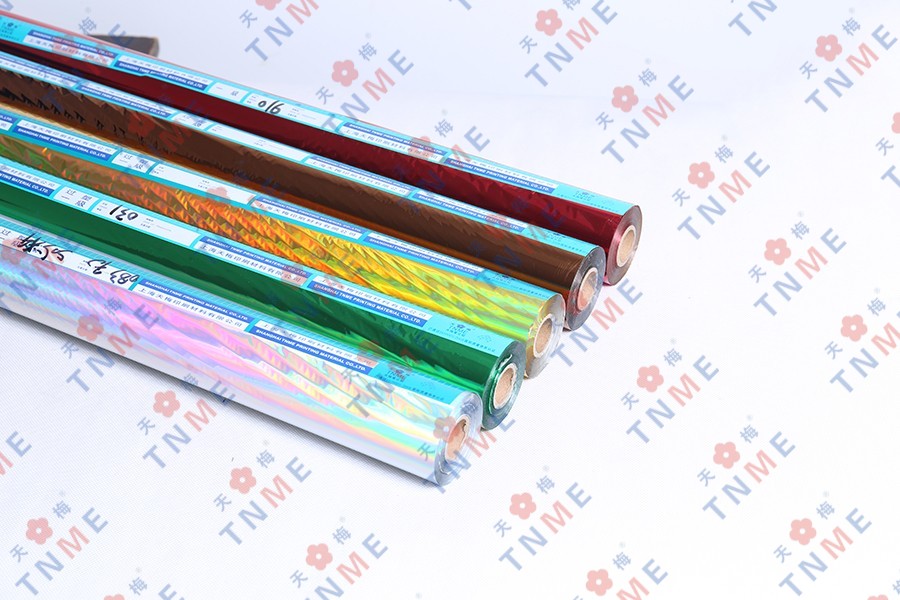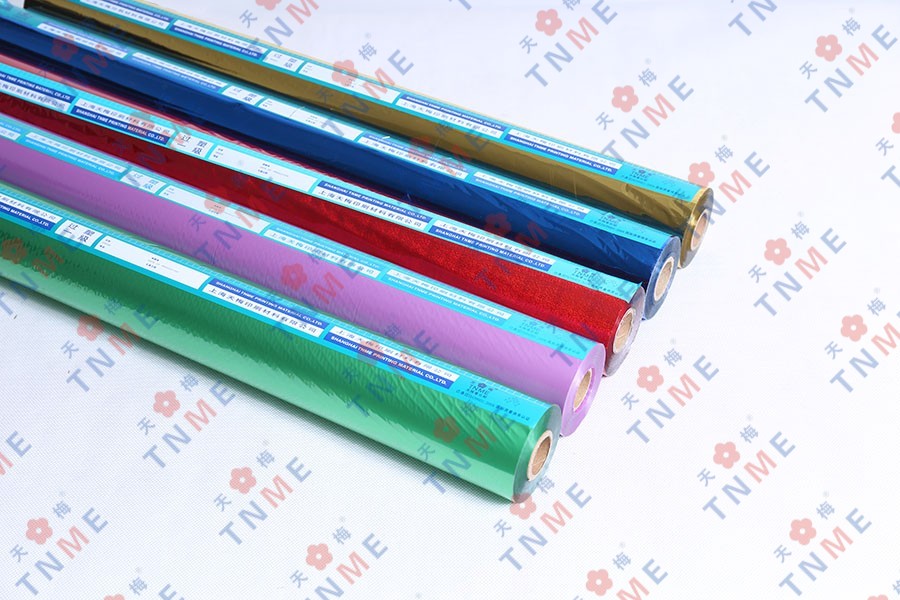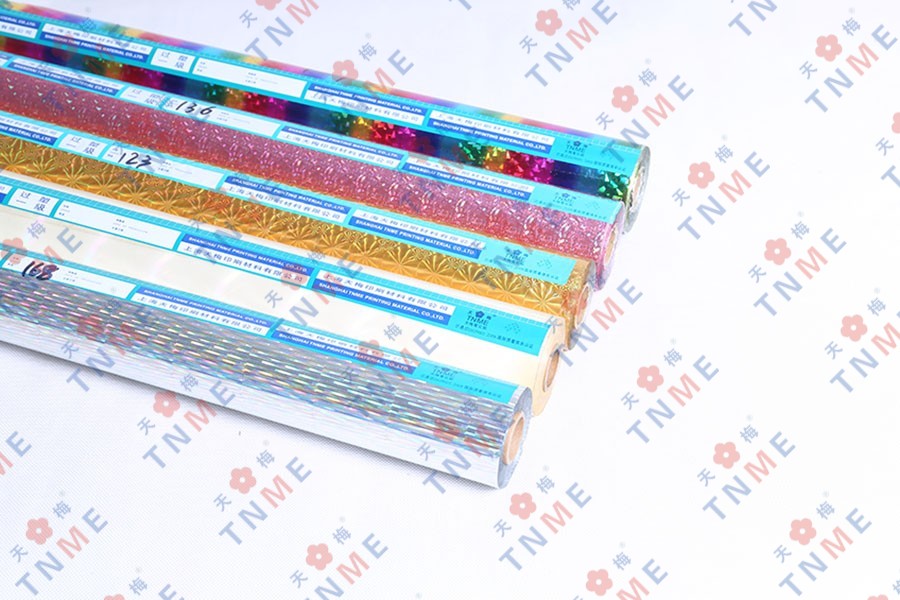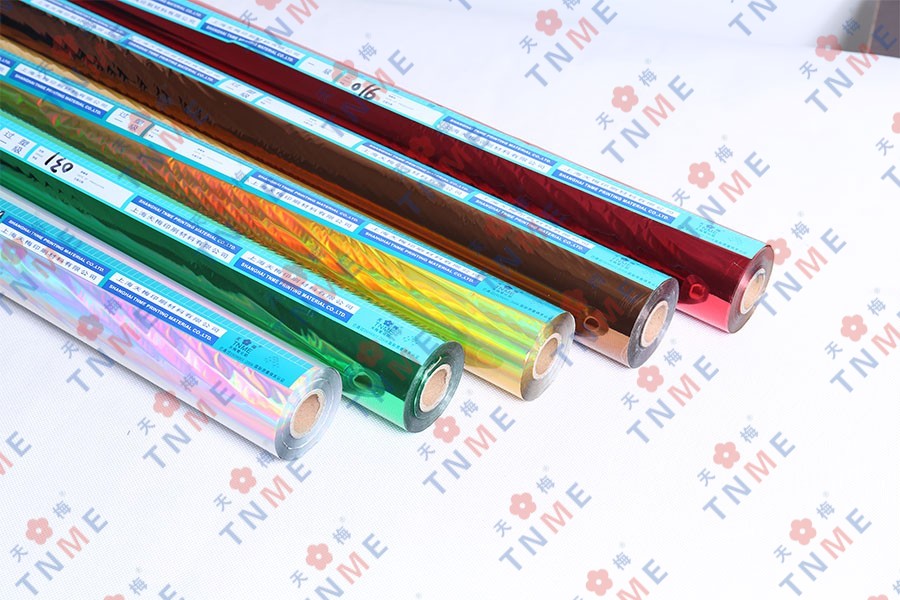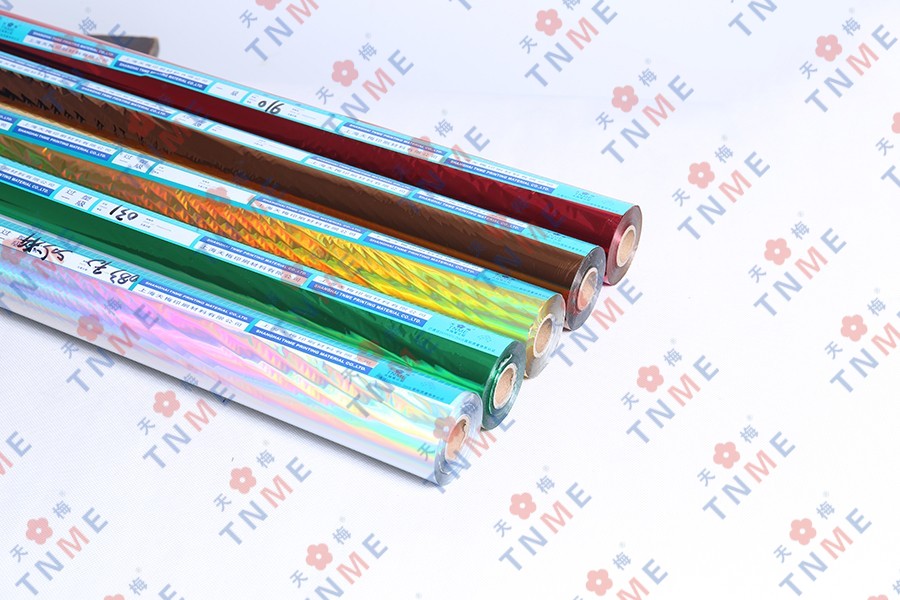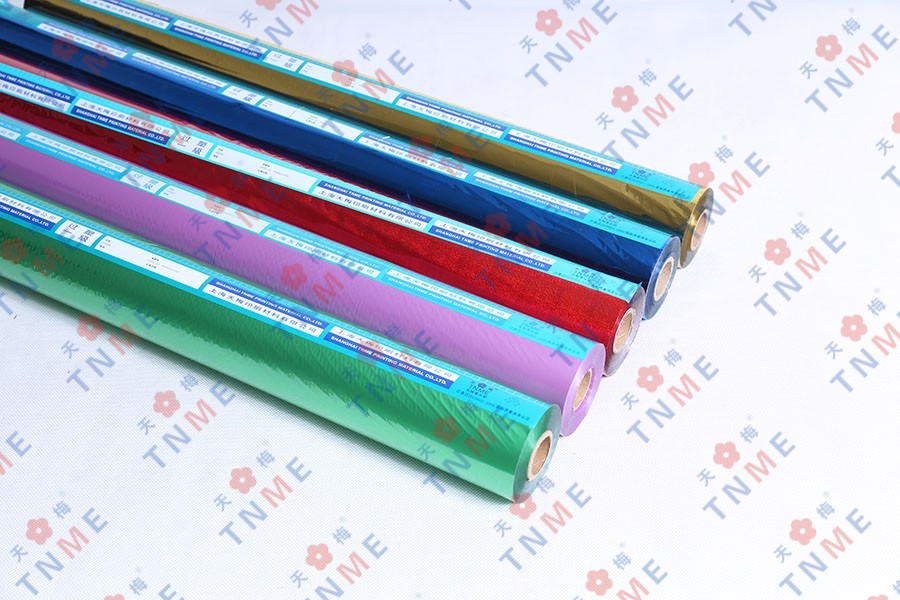Plastic foil: properties, applications and developments
What is Plastic Foil
As a material widely used in modern industry and daily life, plastic foil is playing an increasingly important role. From packaging to printing, from electronic products to architectural decoration, plastic foil meets diverse needs with its unique properties. This article will explore the definition, principle, classification, characteristics, application field, production process, market status and future development trend of plastic foil in depth , fully demonstrating the charm and potential of this material.
Definition of Plastic Foil
Plastic foil is a thin sheet made of plastic material, and its thickness is usually thin, generally between a few microns and a few hundred microns. It transforms plastic raw materials into a film-like product with certain strength, flexibility and functionality through a specific processing technology. Compared with traditional materials such as paper and metal foil, plastic foil has its own unique advantages, such as good moisture resistance, corrosion resistance, plasticity, etc. These characteristics make it widely used in many fields.
Working Principle
The properties of plastic foil are mainly based on its molecular structure and processing technology. At the molecular level, plastics are usually composed of high molecular polymers, which are connected to each other by chemical bonds to form a stable structure. During the processing, the plastic raw materials are molten by heating and pressurizing, and then they are made into foils of the required thickness and shape through processes such as extrusion, stretching and blow molding. In this process, the arrangement of plastic molecules changes, giving the plastic foil different properties. For example, after the plastic foil is stretched, its molecular chains will be oriented in the stretching direction, so that the strength of the foil in this direction is improved.
The Classification of Plastic Foil
1. Classification by material
l Polyethylene (PE) foil : has good flexibility, low temperature resistance and chemical stability. Low-density polyethylene (LDPE) foil is soft and often used in food packaging, plastic bags, etc. High-density polyethylene (HDPE) foil has higher strength and can be used to package heavier items or as industrial packaging materials.
l Polypropylene (PP) foil : It has high strength, rigidity and heat resistance, and can be used at higher temperatures without deformation. It is commonly used in food packaging, textile packaging, labels and other fields. Its surface can also be used for printing and lamination after treatment.
l Polyvinyl chloride (PVC) foil : has good weather resistance, chemical corrosion resistance and electrical insulation. Soft PVC foil can be used for packaging, decorative materials, etc.; hard PVC foil can be used for building materials, housings of electronic and electrical products, etc.
l Polyester (PET) foil : It has excellent mechanical properties, dimensional stability, transparency and barrier properties. It is often used in food packaging, pharmaceutical packaging, electronic packaging and other fields that require high barrier properties. It is also an important material for making printed circuit boards.
2. Classification by function
l Ordinary plastic foil : mainly provides basic packaging, isolation and other functions, has certain strength and flexibility, and is widely used in the packaging and protection of general products.
l Barrier plastic foil : Through special formula and processing technology, it has excellent barrier properties and can effectively block the penetration of oxygen, water vapor, odor and other substances. It is often used in the packaging of food, medicine, cosmetics and other products with high shelf life and quality requirements to extend the shelf life of the product.
l Heat-sealable plastic foil : It can quickly melt and seal with other materials under certain temperature and pressure to form a good sealing effect. It is often used in the packaging industry, such as making various packaging bags and boxes, to ensure the sealing and integrity of the product during the packaging process.
l Antibacterial plastic foil : Materials with antibacterial agents or antibacterial properties can inhibit the growth and reproduction of microorganisms such as bacteria and mold. It can be used in food packaging, medical supplies packaging and other fields with high hygiene requirements to ensure product safety and quality.
The Features of Plastic Foil
1. Physical properties
l Thin and light : Plastic foil is thin and lightweight, making it easy to carry and transport, while also reducing packaging costs and energy consumption.
l Good flexibility : It has good flexibility and plasticity, can adapt to the packaging of items of various shapes, and is not easy to break during folding, bending and other operations.
l High transparency : Many plastic foils have high transparency, which can clearly display the products in the package, improve the attractiveness and recognition of the products, and are especially suitable for packaging of food, gifts, etc.
2. Chemical properties
l Strong corrosion resistance : It has good tolerance to most chemicals and is not easily corroded by acids, alkalis, salts and other chemicals. It can be used to package corrosive products or be used in harsh environments.
l High stability : The chemical properties are stable at room temperature, and it is not prone to decomposition and aging, which can ensure the quality stability of the product during storage and use.
3. Processing characteristics
l Easy to process and shape : Products of different shapes and specifications can be made through various processing techniques such as extrusion, blow molding, calendering, coating, etc., which can meet various application requirements.
l Good printability : After surface treatment, it can combine well with printing materials such as ink and coating to achieve exquisite printing effects, providing rich decoration and information display functions for product packaging.
The Application fields of Plastic Foil
1. Packaging
l Food packaging : Plastic foil is widely used in food packaging due to its good barrier properties, moisture resistance, flexibility and hygiene. For example, PE foil is used to make food packaging bags and plastic wrap; PET foil is used to package biscuits, chocolate, tea, etc.; PP foil is used to seal food containers, etc. It can effectively protect food from the influence of the external environment, extend the shelf life of food, and maintain the color, aroma and nutritional content of food.
l Pharmaceutical packaging : The safety and barrier properties of pharmaceutical packaging are extremely high, and plastic foil can meet these requirements. For example, PVC/PVDC composite foil is used for pharmaceutical blister packaging, which can effectively prevent pharmaceuticals from moisture, oxidation and microbial contamination; aluminum-plastic composite foil is used for pharmaceutical bag packaging, which has good barrier properties and heat sealing properties, ensuring the quality and safety of pharmaceuticals during storage and transportation.
l Cosmetic packaging : Plastic foil has become an important material for cosmetic packaging due to its beautiful appearance, light weight, and easy processing and molding. For example, PET foil is used to make cosmetic packaging boxes and labels; PE foil is used to make the inner layer of cosmetic hoses, etc. It can show the high-quality image of cosmetics, while protecting cosmetics from external factors and extending their service life.
2. Printing field
l Suitable for large, medium and small area printing : The plastic foil has a flat surface and good printability, and can achieve good results whether it is large-area pattern printing or fine text printing. In packaging printing, it can print product brand logos, product information, promotional patterns, etc.; in label printing, it can produce various exquisite labels for product identification and traceability.
l Both flatbed and roll printing are possible : Plastic foil can be made into flat or roll form to suit different printing equipment and printing processes. Flatbed printing is suitable for some products with high printing precision requirements and small printing quantities; roll printing is suitable for large-scale, high-efficiency printing production, such as the printing of packaging materials.
l Widely used in printing substrates such as plastics, glossy paper, ink paper, book covers, etc .: Plastic foil can be compounded with plastics, paper and other materials to form printing materials with various properties. For example, after printing on the surface of plastic film, it can be used to make the outer packaging of various plastic products; printing plastic foil on glossy paper and ink paper can improve the moisture resistance, wear resistance and printing effect of the paper; in the printing of book covers, the use of plastic foil can increase the gloss and texture of the cover, while protecting the book from damage.
3. Other fields
l Electronics : Plastic foil is widely used in the electronics field. For example, PET foil is used to make the insulation layer of printed circuit boards, which has good electrical properties and dimensional stability. In the packaging of electronic products, the use of antistatic plastic foil can effectively prevent electronic products from being damaged by static electricity.
l Building decoration field : Plastic foil can be used for surface protection and decoration of building decoration materials. For example, sticking plastic foil on the surface of plastic floor, wallpaper, decorative board, etc. can improve the wear resistance, stain resistance and decorative effect of the material; sticking heat insulation and explosion-proof plastic foil on building glass can play the role of heat insulation, energy saving and safety protection.
l Agriculture : In agricultural production, plastic foil can be used to make agricultural films, sunshade nets, etc. Agricultural films can maintain soil temperature and humidity and promote the growth of crops; sunshade nets can adjust light intensity and protect crops from strong light.
The Production process of Plastic Foil
1. Raw material preparation
According to the type and performance requirements of the plastic foil, choose the appropriate plastic raw materials. These raw materials are usually granular or powdery, and need to be dried, mixed and pre-treated before use to ensure the quality and uniformity of the raw materials. For some plastic foils with special properties, it is also necessary to add corresponding additives, such as antioxidants, plasticizers, antibacterial agents, etc.
2. Extrusion molding
The pre-treated plastic raw material is added to the extruder and heated to melt the raw material. Under the push of the screw, the molten plastic is extruded through a specific die to form a plastic sheet with a certain thickness and width. The extruder temperature, screw speed, die structure and other parameters have an important influence on the quality and performance of the plastic foil and need to be precisely controlled according to the actual production situation.
3. Stretching process
In order to improve the strength, barrier properties and other properties of plastic foil, it is usually necessary to stretch the extruded plastic sheet. The stretching process is divided into longitudinal stretching and transverse stretching, which can be carried out on different equipment. Longitudinal stretching is generally achieved by a stretching roller set, so that the plastic sheet is elongated in the longitudinal direction; transverse stretching is carried out by a tentering machine, so that the plastic sheet is stretched in the transverse direction. During the stretching process, the plastic molecular chain will be oriented along the stretching direction, thereby improving the performance of the plastic foil. Parameters such as stretching multiple, temperature, speed, etc. need to be optimized and adjusted according to the type and performance requirements of the plastic foil.
4. Post-processing
l Surface treatment : In order to improve the printing adaptability, adhesion and other surface properties of plastic foil, it is necessary to perform surface treatment on it. Common surface treatment methods include corona treatment, plasma treatment, coating treatment, etc. Corona treatment is to apply high voltage to the surface of plastic foil to ionize the air to generate plasma, thereby activating the surface of plastic foil and improving its surface tension and adhesion; plasma treatment is to use plasma to etch and modify the surface of plastic foil to improve its surface properties; coating treatment is to apply a layer of coating with specific functions on the surface of plastic foil, such as anti-fog coating, antibacterial coating, etc.
l Slitting and coiling : After stretching and surface treatment, plastic foil needs to be slitting and coiling according to actual use requirements. Slitting is to cut the wide plastic foil into narrow strips of the required width, and coiling is to roll the slitting plastic foil into a roll shape for easy storage, transportation and subsequent processing. During the slitting and coiling process, the flatness and coiling quality of the plastic foil need to be ensured to avoid defects such as wrinkles and scratches.
The Market Status of Plastic Foil
1. Market size
With the development of the global economy and the improvement of people's living standards, the market demand for plastic foil continues to grow. In recent years, the global plastic foil market size has shown a steady upward trend. According to data from market research institutions, the annual compound growth rate of the plastic foil market has remained at a certain level in the past few years, and it is expected to continue to grow in the next few years. This is mainly due to the wide application and growing demand for plastic foil in industries such as packaging, printing, electronics, and construction.
2. Competition landscape
The plastic foil market is highly competitive, with numerous manufacturers around the world. Large multinational companies dominate the market with their advanced technology, rich product lines, extensive sales networks and strong brand influence. These companies continue to increase their R&D investment and launch high-performance, high-value-added plastic foil products to meet the diverse needs of the market. At the same time, some regional small and medium-sized enterprises are also taking advantage of their price advantages and localized services to get a share in specific market areas and regions. In addition, with the rise of emerging economies, plastic foil manufacturers in these regions are also growing and gradually emerging in the international market, intensifying the fierceness of market competition.
3. Driving factors
l Growth in the packaging industry : The packaging industry is the largest application area for plastic foil. With the continuous development of industries such as food, beverages, pharmaceuticals, and cosmetics, the demand for packaging materials continues to increase. Plastic foil has become one of the preferred materials in the packaging industry due to its excellent performance, which has driven the growth of the plastic foil market.
l Consumption upgrade : As consumers' requirements for product quality and packaging increase, the demand for plastic foil with good barrier properties, aesthetics, and environmental protection is also increasing. Manufacturers continue to develop and produce new plastic foil products to meet the market demand brought about by consumption upgrades.
l Technological innovation : Continuous innovation in plastic foil production technology, such as the development of new raw materials, improvement of processing technology, and research and development of functional products, has continuously improved the performance of plastic foil and expanded its application areas, further promoting the development of the market.
4. Challenges and limitations
l Environmental pressure : The pollution caused by plastic waste to the environment has received increasing attention. As a type of plastic product, plastic foil is also facing environmental pressure. Consumers' demand for environmentally friendly products has increased, and the government has also issued a series of relevant policies and regulations to restrict the use and production of plastic products. This has brought new challenges to the plastic foil industry. Companies need to increase R&D investment and develop degradable and recyclable plastic foil products to cope with environmental pressure.
l Fluctuation of raw material prices : The production of plastic foil mainly relies on fossil raw materials such as oil and natural gas, and the prices of these raw materials fluctuate greatly due to factors such as international politics and economic situation. The instability of raw material prices has brought difficulties to the cost control of plastic foil manufacturers and increased the operating risks of enterprises.
l Fierce market competition : As mentioned above, the plastic foil market is highly competitive, and companies are facing competitive pressure from domestic and foreign peers. In the case of serious product homogeneity, companies need to continuously improve product quality, reduce costs, strengthen brand building and marketing to improve their competitiveness.
Future Development Trends
1. Research and development and application of environmentally friendly plastic foil
With the continuous enhancement of environmental awareness, degradable and recyclable environmentally friendly plastic foil will become the mainstream trend of future development. Biodegradable plastic foil, such as polylactic acid (PLA) foil and polyhydroxyalkanoate (PHA) foil, will be more widely used in food packaging, agricultural mulch and other fields due to its degradable characteristics in the natural environment. At the same time, developing efficient plastic recycling technology and improving the recycling rate of plastic foil are also important directions for future development. Enterprises will increase investment in the research and development of environmentally friendly plastic foil to promote the green and sustainable development of the industry.
2. Development of high-performance plastic foil
In order to meet the higher requirements of different industries for the performance of plastic foil, the research and development of high-performance plastic foil will be one of the future development trends. For example, the development of plastic foil with higher barrier properties can meet the market demand for stricter shelf life requirements for food, medicine and other products; the development of plastic foil with better mechanical properties, heat resistance and weather resistance can expand its application in electronics, construction and other fields. The performance and quality of plastic foil can be continuously improved by improving raw material formula, optimizing processing technology and adopting new additives.
3. Development of multifunctional integrated plastic foil
Plastic foils that integrate multiple functions will be favored by the market. For example, antibacterial, fresh-keeping, anti-counterfeiting, self-repairing and other functions are integrated into plastic foil, so that it can realize multiple functions at the same time during the packaging process, thereby improving the added value and competitiveness of the product. This multifunctional integrated plastic foil will be widely used in industries with high requirements for product quality and safety, such as food, medicine, and cosmetics.
4. Exploration of intelligent plastic foil
With the development of technologies such as the Internet of Things and sensors, the research and development of intelligent plastic foil will also become one of the future trends. Intelligent plastic foil can integrate sensors, microchips and other components, and can monitor the status of products in the package in real time, such as temperature, humidity, gas concentration, etc., and transmit information to users to achieve real-time monitoring and management of product quality. For example, in food packaging, intelligent plastic foil can monitor the freshness of food and remind consumers to eat it in time to reduce food waste. Although intelligent plastic foil is still in the exploratory stage, it is expected to be widely used in the future as the technology continues to mature.
Conclusion
As an important material, plastic foil plays an irreplaceable role in many fields such as packaging, printing, electronics, and construction with its unique properties. From its definition, principle, classification, characteristics to application fields, production processes, and then to the current market situation and future development trends, we can see that the plastic foil industry is in constant development and change. While facing challenges such as environmental pressure, fluctuations in raw material prices, and market competition, it also ushered in development opportunities such as environmental protection, high performance, multi-functional integration, and intelligence. In the future, with the continuous innovation of technology and the continuous changes in market demand, the plastic foil industry will continue to grow and develop, and make greater contributions to promoting the progress of various industries and improving people's quality of life.




 English
English 中文简体
中文简体
